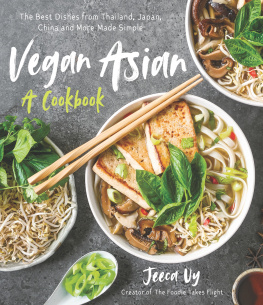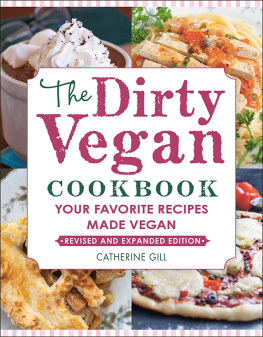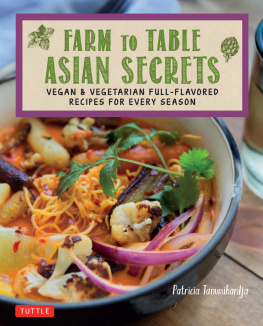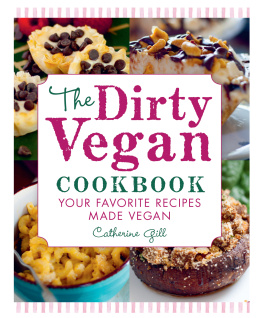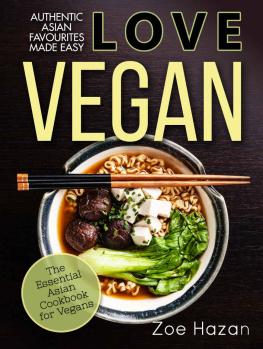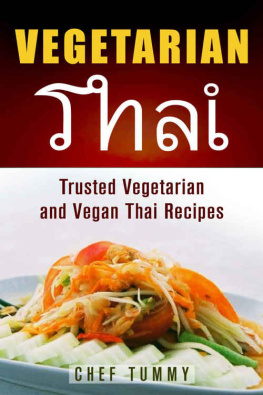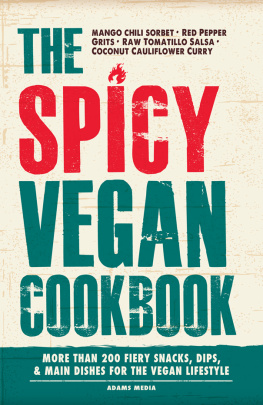Contents
Guide
The Best Dishes from Thailand, Japan, China and More Made Simple
Vegan Asian
A Cookbook
Jeeca Uy
Creator of The Foodie Takes Flight

The author and publisher have provided this e-book to you for your personal use only. You may not make this e-book publicly available in any way. Copyright infringement is against the law. If you believe the copy of this e-book you are reading infringes on the authors copyright, please notify the publisher at: http://us.macmillanusa.com/piracy.
To everyone who believed in me: Thank you for helping me spread my wings.
Hello! n ho! Mabuhay!
In case youre reading this with little to no background on me, Im Jessica, but I usually go by Jeeca to my friends and family. Ive been vegan since I was seventeen years old. Back in 2015, I started my food blog and Instagram account The Foodie Takes Flight, where I wanted to document my day-to-day meals and re-create my favorite dishes from growing up. Little did I know that Id be able to reach hundreds of thousands of people with my food and stories. Back then, I just really wished I had someone to guide me as I navigated my way through cooking and preparing Asian food as a vegan!
I was born and raised in the sunny (and really humid) Southeast Asian country of the Philippines, which comprises over 7,000 islands (depending on whether its high tide or low tide, ha ha). I grew up in a multilingual household with my parents speaking a mix of English, Filipino and Hokkien. Im fifth generation Chinese from my fathers sidemy great-great grandparents emigrated from Fujian province in China and settled down in the Philippines. My upbringing was a mix of both Chinese and Filipino traditions, which greatly influenced my tastes and preferences for cooking. I have vivid early memories in the kitchen, learning tips and tricks from my mother, who herself had learned them from both my guama (my mothers mom) and ama (my fathers mom).
Ive also been lucky enough to have been exposed to a plethora of cultures, as my parents love to travel. They are the two most hardworking people I know and they strove tirelessly to provide for my sister and me. They wanted to be able to visit a new country and city every year if time and budget permitted, to be able to see more than just the sights but also to give us a better understanding and view of the world. This really paved the way for my love of food and culture that I got to immerse myself in firsthand. These are memories I cherish and hold on to to this day, and Im immensely grateful for the chance to experience them early on in my childhood.
This cookbook is a compilation of some of my favorite East and Southeast Asian dishes growing upbe it from family gatherings, favorite restaurants, travels or simply from home-cooked meals.
While I love dining out and trying out new dishes, whether it be in a casual Chinese restaurant or in a little hole-in-the-wall ramen alley, theres really nothing like home cooking. I wanted to create recipes that didnt sacrifice flavor for ease and instead wanted to strike that balance of simple yet really flavorful meals you could easily cook at home using easy-to-find ingredients. There are, of course, certain pantry items youll have to stock up on to be able to really achieve that desired flavor you cant get elsewhere. Once you have those few staples, these recipes are what you can whip up for yourself or your loved ones for a simple weeknight meal or celebration.
Be prepared for a whole chapter of recipes just for tofu because, yes, tofu is probably the building block of Asian cuisine (see what I did there!), especially for vegans, as its an amazing source of protein. There is also a chapter comprising noodle and rice recipes because both of these are staples in Asian households. In a Chinese-Filipino household, we have an endless supply of rice and noodles, so trust me when I say that we cant live without them. Ill be sharing many different ways you can enjoy your rice and noodlesand you will probably end up having seconds, even thirds.
I wanted the recipes in this book to reflect the cultures of these dishes and do them justice, all while making them as simple and approachable as possible. Ive always believed in the power of food to bring people together. I really hope the recipes in this book can take your palate on a little tour across East and Southeast Asia and leave you, your friends, family and other loved ones with happy and satisfied bellies.
Lastly, if theres one thing I learned from my mom in the kitchen, its to taste as you go and adjust depending on what suits your preference! She never really followed recipes to a T and went with her instincts and taste buds. So, even though these recipes have their respective lists of ingredients and measurements, I want them to serve merely as a guide to determine the overall flavor profile of the dish. Every recipe is very flexible and youll see a lot of lines stating adjust depending on your desired taste. So, dont hesitate to do just that and, of course, to enjoy the process of cooking and getting creative in the kitchen.
Happy cooking!
With all my love,

I use tofu as a main ingredient for a lot of the recipes in this book since it is really versatile, high in protein and a great substitute for meat in traditionally meat-based dishes. Not only is tofu commonly used in vegan cooking, but its also an ingredient thats been ingrained in Asian cuisine for generations. As you probably already know, there are three common types of tofu: silken, firm and extra-firm. In this section, I will share my tips about how to select, store and prepare each type, hopefully to give you a better understanding of each one.
Selecting Tofu
My go-to type of tofu is extra-firm because its the easiest to store and cook with. Its also the meatiest in terms of texture because its much more compact compared to the other types of tofu. Of course, the type of tofu needed will vary based on the recipe youre making. Firm tofu is best used for deep-frying, as it holds up well enough to be fried into a nice golden crisp with little worry of it breaking apart. You can get it crispy on the outside, while on the inside you still get that juicy bite. Both firm and extra-firm tofu can easily become the main ingredient in a dish, as theyre both good replacements for meat because of their texture. You will also find baked or smoked blocks of extra-firm tofu, which are already marinated. These usually have a very light smoky flavor that can go well with stir-fried dishes such as fried rice or noodle dishes. Silken tofu, on the other hand, is much more delicate to work with, but what it brings to a dish is a different experience altogetherit adds a nice smooth and velvety texture to delicious, saucy recipes, such as , that really takes them to a whole new level.
As for where to purchase tofu, if there are local soy or tofu stores or Asian groceries in your area, that would be the best place to check. Tofu in Asian stores can come in Styrofoam trays covered in plastic wrap. If there is a tofu maker where you can purchase freshly made tofu, this is your best option, because theres nothing like fresh tofu! Youll really notice the difference between freshly made tofu and those packaged ones in the refrigerator section of supermarkets or grocery stores.

